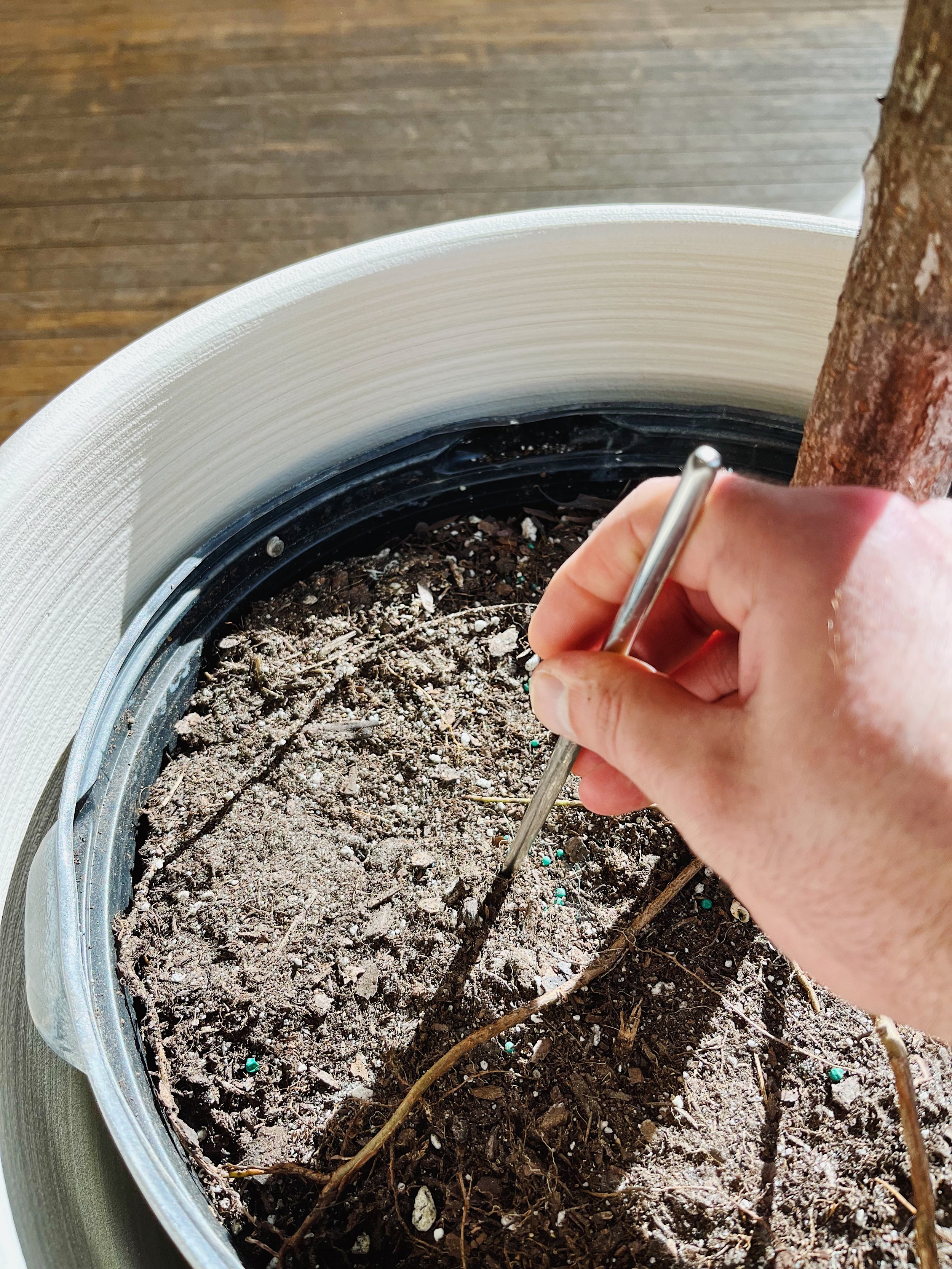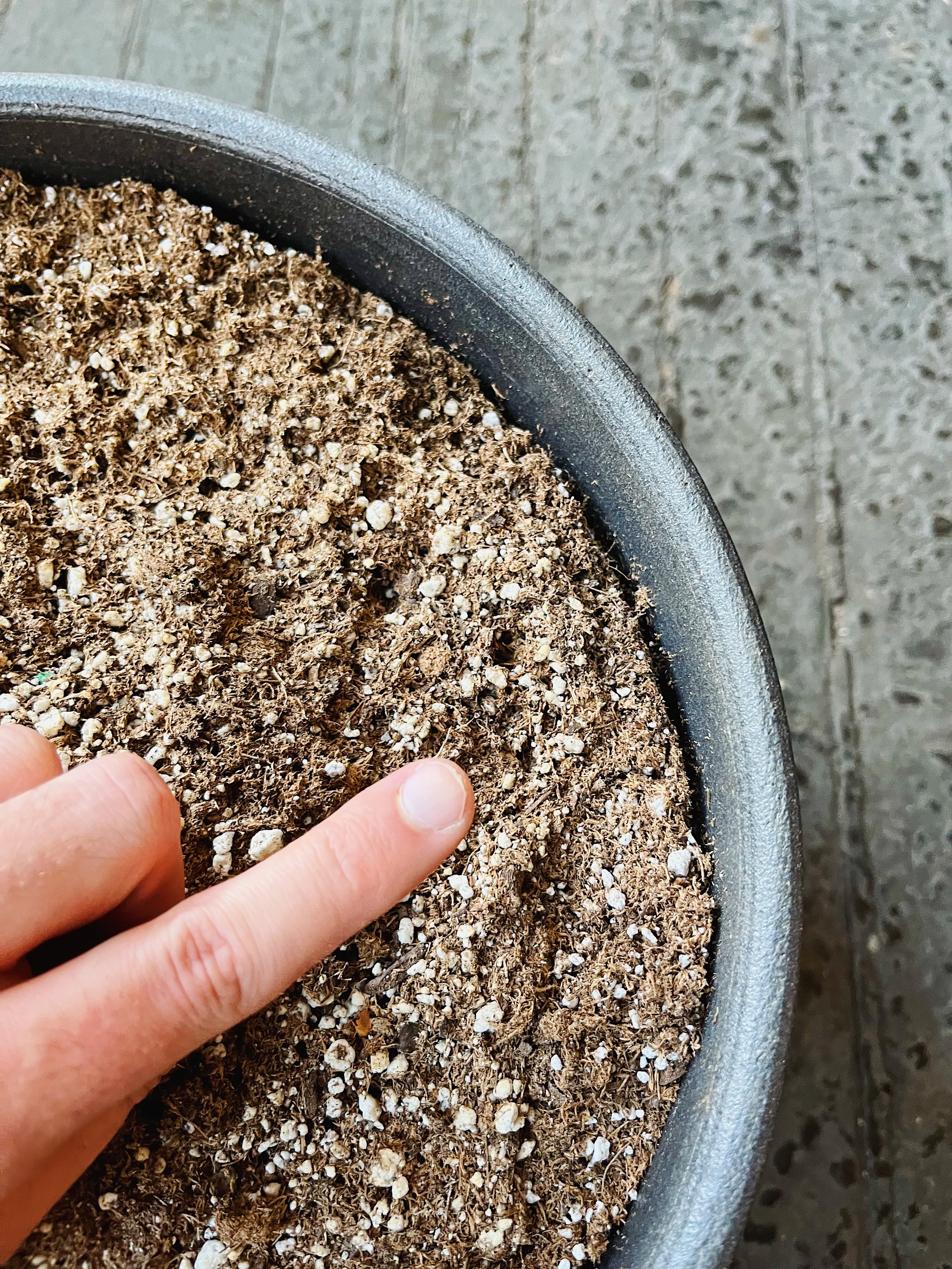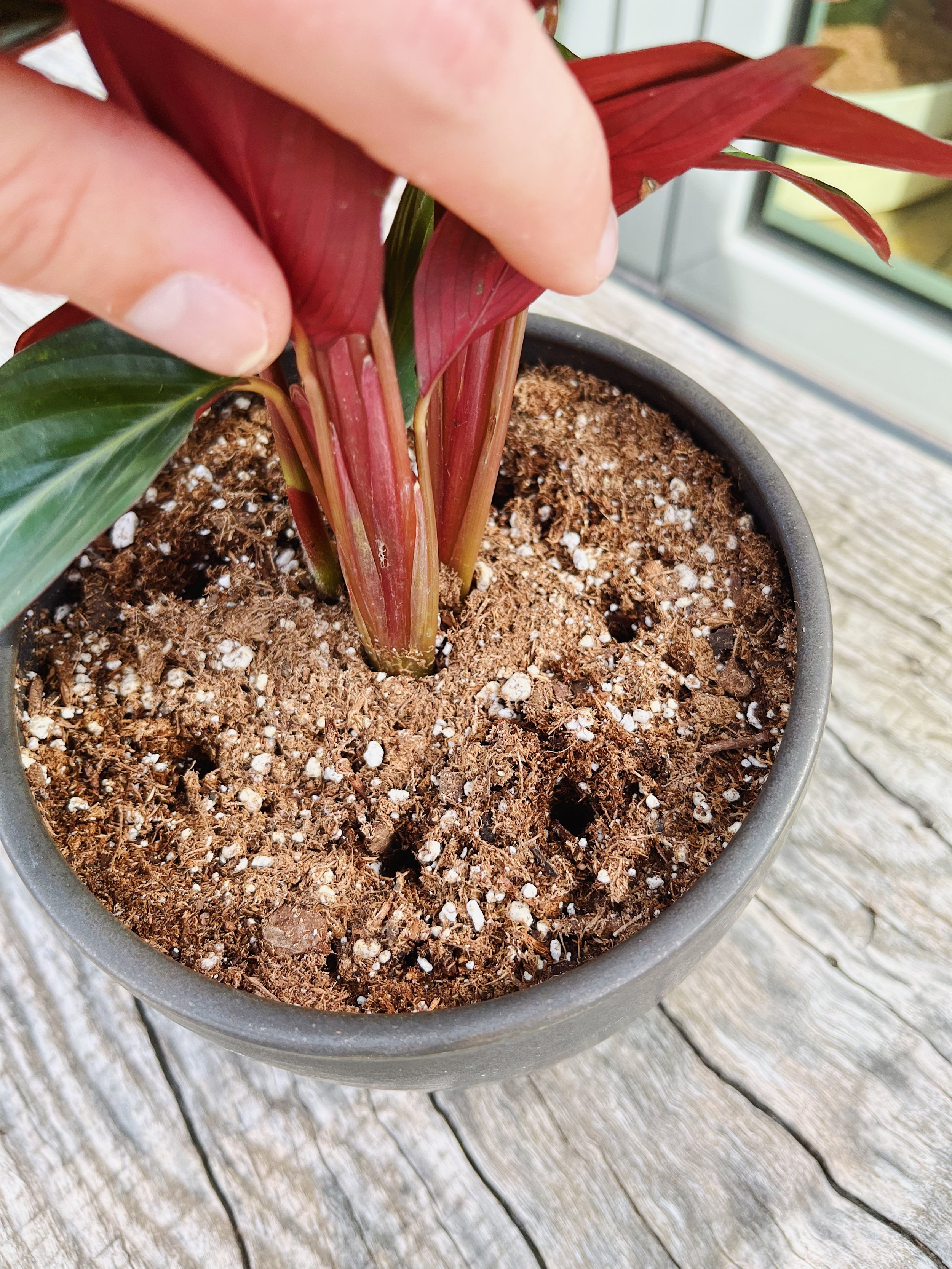Break Up Your Potting Mix: The Importance of Aerating Your Houseplants’ Soil
When it comes to prioritizing houseplant care, aeration might not always be thought about—it’s something that’s not always at the forefront of everyone’s minds, and it’s a task that can be done on a more infrequent basis. But, what is it, and why should it be done?
What is aeration?
Aeration is the act of introducing air into a material or substrate, and just as people aerate their grass and lawn, your houseplants would appreciate every few months—or as needed—so that they can better receive oxygen to their roots. Typically in nature, this is a task done by worms and microorganisms, but indoors, this responsibility falls upon us to manually poke little holes into our plant’s potting mix.
Plant parents take on a lot of roles for their plants: rain deliverers, nutrient suppliers, leaf and stem pruners, and sunlight givers—we may as well add worm imitators to our lists.
Using a longer tool, like this metal chopstick, will allow you to aerate your plant’s soil effectively.
Why you should aerate your houseplants’ soil
When you water your plants efficiently, the potting mix they’re in will absorb that water like a sponge and expand slightly—however, as they dry out between waterings, that potting mix will contract and begin to pull away slightly from the edges of the planter they’re contained in. Over time, your plant’s potting mix will naturally settle and begin to compact, or press together, decreasing the amount of water and oxygen available for your plant’s root system.
A plant that has compacted soil might begin to display symptoms of under-watering over time as the soil compacts and becomes hydrophobic, meaning water literally can’t break through the soil to be absorbed correctly—this is where aeration comes in. Another tell-tale sign that your plant’s soil is getting compacted is when you water your plant, and the water either runs straight through the drainage hole at the bottom, or if the water pools on top of the soil and doesn’t seem to want to be absorbed.
Aerating by poking holes into your plant’s soil will force water into the depths of your planter, allowing it to fully hydrate the soil and saturate the root system, alleviating under-watering symptoms your plants may be showing.
When the soil begins to pull away from the edge of the planter, it’s starting to compact and become hydrophobic.
How to aerate
The process of aerating your houseplants’ soil is thankfully relatively simple. All you’ll need is a long, slender utensil—think a chopstick or a thin, wooden stake.
Right before you water your plants next, take your tool of choice and gently insert and wiggle its way down through your plant’s potting mix. This should happen with minimal resistance—if it’s difficult to push your tool down through the soil, try another spot to minimize root damage.
This being said, a little bit of root damage during this process is bound to happen, but don’t fret! This isn’t something you’ll do often, and roots can easily regrow and rebuild themselves.
Once you’ve made that first insert into the soil, go ahead and do it again, roughly three or four more times around the diameter of the soil, trying to space out your holes evenly. Take this opportunity to also break up any top soil that has begun to contract from the sides of your planters—this can be done with your fingers by gently scraping and breaking through that very top layer of potting mix.
When this has been accomplished, go ahead and water your plant, and watch as the potting mix fully absorbs that water. Your plant will thank you for it!
While this is an infrequent task, aerating is an important part of plant care that can make a world of difference in how your plant interacts with the soil it’s planted in. If you have any questions about aerating, drop a comment below or pop into one of our retail shops!
Poking multiple holes through your soil will allow water to pass through easily.
Water is effectively absorbed by the plant after aeration.
Words & photos by: Egan Thorne




